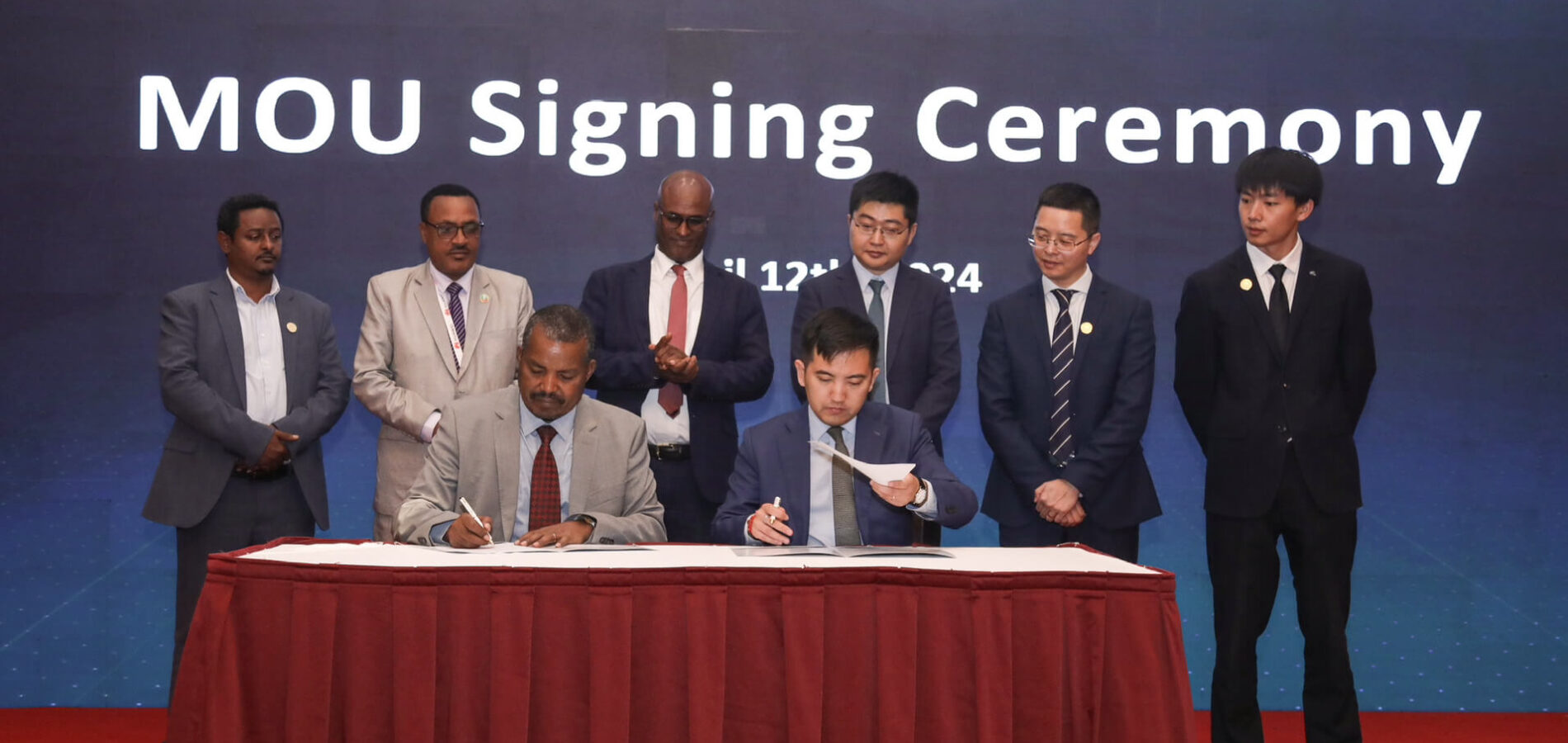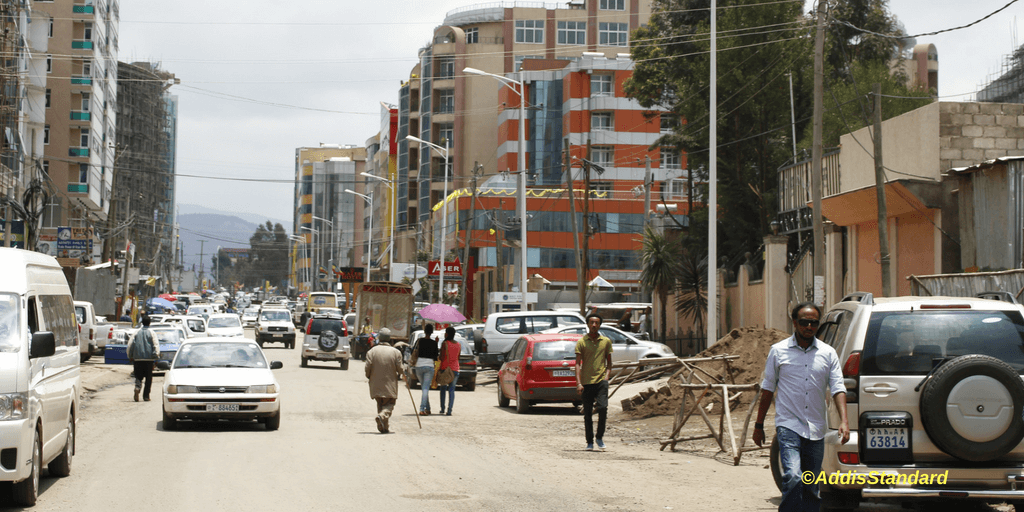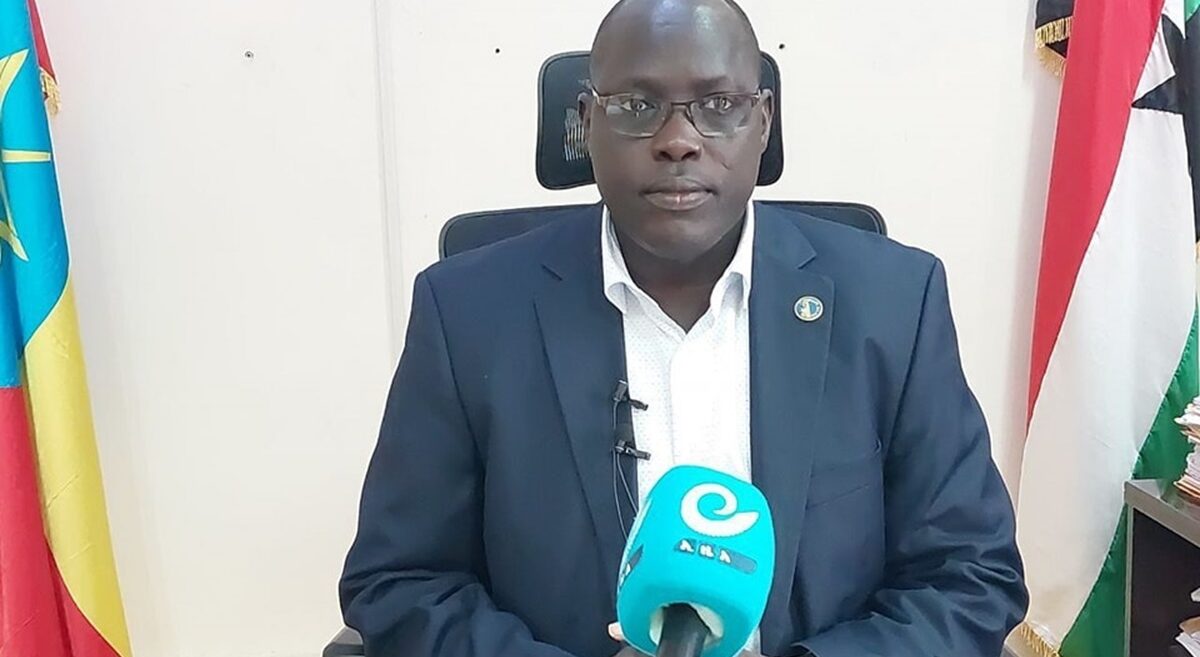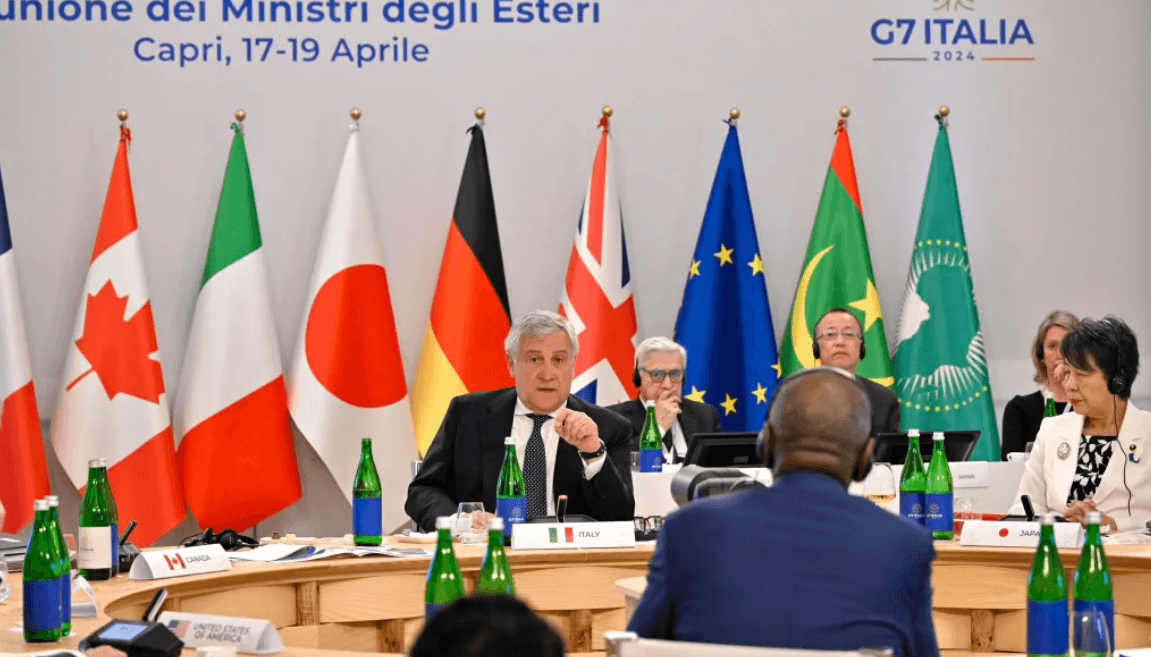Ethiopia’s experiment with federalism: Why it’s not South Africa’s Apartheid? (Part I)
Tsegaye R. Ararssa, Special to Addis Standard
What is the story of Ethiopia’s experiment with federalism? What stories does it tell? And what stories can be told about it? Feeding from and into the ever polarized and polarizing ‘debate’ on Ethiopia’s politics, a few academicians are arguing that the Ethiopian federal arrangement is synonymous with apartheid South Africa’s ‘racial federation’.
In this series of analysis, I will explore the Ethiopian federal experiment tells (and masks) with a view to shedding light on whether, by juxtaposing the two systems, there emerges a tale of two federations (Apartheid South Africa and Ethiopia) or two tales of two differently unjust governance systems.
The story of the Ethiopian federation is a story, for now, of ‘an unfortunate means to a legitimate end.’ It is unfortunate because it is heavily contested and unnecessarily so. The fact that it is constantly a subject of controversy at every election campaign over the years indicates that the federal idea is far from an uncontested idea. Its end is legitimate because it aims at restructuring the state on a morally just set of premises; it tries to address one of the two most salient political questions of the 20th century Ethiopia as articulated by the student movement of the 1960s: the historic ‘question of nationalities’ and the question of land.
Therefore, in the longue duree of Ethiopian history, the current federal arrangement can be told as a story of the first step in the unbreakable quest for freedom from the bondage of an ethnicized/racialized hierarchy imposed by the Abyssinian Empire on the ‘other’ peoples of Ethiopia. It is a story of a relentless pursuit of ethno-cultural justice by (subaltern) folks who took a stride towards emancipation through self-determination. It is a story of devising an alternative model of ‘nation-and state-building’.
But owing to the current ‘authoritarian constitutional rule’ that cunningly deploys the law to mask the repression, co-optation, and manipulation of legitimate national aspirations (thereby perpetuating pre-existing injustice), Ethiopia’s federalism has not delivered the promised emancipation. In excavating this story and responding to the inapt association with apartheid, I will mainly rely on a close reading of the Ethiopian constitution along with its immediate antecedents and the story it tells about both the past and the future so that we can locate the federalism in that story. By so doing, I will also highlight, in passing, how different the assumptions, principles, and goals that motivated apartheid are from their counterparts in Ethiopia.
Of Ethiopia’s experiment with federalism
Owing to the hegemonic status that centralized unitary modes of governance enjoyed for long in Ethiopia, federalism is often viewed as a qualitatively inferior mode of governance that has to be justified on other grounds (such as normative pluralism, peace, or justice). Consequently, its detractors have more terms with which to denounce it than its proponents have to ennoble it. Hence, the frequent use of the inaccurate term ‘ethnic federalism’ to refer to it. More unkind commentators would refer to it as ‘tribal [ye-gosa], or racist [ye-zer], federalism’. They thus use terms such as ‘balkanization’,‘ethnicization,’‘bantustanization,’ and, as in the most recent iterations, ‘apartheid’, to describe the dispensation that Ethiopia’s federal experiment seeks to put in place. Consequently, two decades after its formal adoption, and the life of a generation is shaped by it in more ways than one, it is still disputed on whether it is the appropriate option for Ethiopia’s transformation from a centralized state-socialist/state-nationalist state into a multi-foundational, multinational, multicultural federal republic premised on a just social foundation.
To be sure, the project of redemptive transformation has faltered, or perhaps derailed for good, and for good reasons that reveal how the ruling party, the Ethiopian Peoples’ Revolutionary Democratic Front (EPRDF), posing ambiguously in relation to the federal arrangement, is at once the custodian and the major subverter of the federalist project. This ambiguous posture of the EPRDF vis-à-vis the federal structure (paradoxically both as the primary sponsor and principal saboteur of the federal system) has contributed to this derailment of the transformative goal of federalism. This in turn has disaffected many a federalist forcing them to retract their initial support for the federal dispensation. In this section, I offer a sketchy ‘description’ of the federal system in context. But to help us get a more complete picture, it is important to identify some of the misconceptions that cloud our vision of the federal arrangement. It is also important to stress that the criticisms marshaled against the federal arrangement are buttressed and reinforced by the misconceptions that surround it.
Consequently, the discursive undermining of the federal system relies on and contributes back to the old narrative that privileges the core over the periphery, the center over the margin, the dominant self over the subaltern other. It is part of what some, following tack of the late Donald Levine, rather benignly characterize as the ‘Greater Ethiopia’ narrative which takes the “Geez civilization” as the core of the empire that subsumes all the rest under it. This dominant narrative that is deployed to undermine the federal experiment feeds from and feeds into several misconceptions about the federal arrangement.
One major misconception (or at times deliberate distortion) is noted in the characterization of the federation as ‘ethnic’ when in actual fact it is a multinational one. The term ‘ethnicity’ does not occur in Ethiopia’s constitutional language, in part because the ‘Nations, Nationalities’ rhetoric of the constitution is not directly translatable to the concept of ethnicity frequented in the rhetoric of liberal democracies, and in part because the word ethnicity does not have an exact equivalent in Ethiopian languages. The use, in some circles, of ‘ethnicity’ interchangeably with gosa, a term that is closer in meaning to tribe than ethnicity, is a chosen way of belittling the effort to address the challenges of diversity. Given the fact that the constituent units are ‘nations’ (or a union of several ‘nations’) and given none of the states are ethnically homogenous, it is a misnomer to refer to the Ethiopian system as an ‘ethnic federation’.
Another oft repeated misconception is that Ethiopia’s federation seeks to build unity out of diversity (E Pluribus Unum) when in actual fact what it establishes is diversity in unity, i.e., a union of diverse nations in one larger polity (Plures in Uno, i.e., many in one). This misconception has often led to the confusion about the model of state-and nation-building aspired for under the federal dispensation.
The mistaking of regime transition for state transformation is another misconception usually entertained among the political elites of the regime in power. The change of regime, some assume, is also a change of the infrastructure of inequality that is the foundation of the Ethiopian imperial state. As a result, they denounce the quest for ethno-cultural justice and the demand for self-determination as irrelevant in post-Derg Ethiopia. (This is observed in the standard government line which claims that “the ‘national question’ is already answered”). While there is a change of regime to be sure, we are yet to see a transformation of the Ethiopian imperial state to a fairer, more just, more equitable, and democratically governed polity.
Two decades into the experiment, it is still remiss of us that what the federation does is a movement from a uni-foundational empire state to a multinational, multi-foundational republic ensconced on the constitutionally established set of principles that go beyond ‘blood and soil’. These principles (stated in arts 8-12 of the constitution as popular sovereignty, constitutionalism, human rights, secularism, and rule of law) render the old source of legitimacy (force, religion, and genealogy/tradition) obsolete. More importantly, it recognizes the co-eval presence and co-equal participation in the founding of the republic – this is clearly seen in the opening statement of the Federal Constitution (FDRE) where the founders are stated as “We, the Nations, Nationalities, and Peoples of Ethiopia.” By so doing, it makes a pronouncement that there is no hierarchic or core-periphery relationship among Ethiopia’s constituents. This misunderstanding of foundational issues is one of the misconceptions that are unaccounted for in the discourse on federalism and in the many instances of undermining it.
To some people, just because Amharic is the working language of the Federal government, it follows that everyone speaks, or should speak, Amharic. They hardly understand that Amharic is the language of the federal officials and institutions, not the language of the Ethiopian people (other than the Amhara people).
In recent discussions regarding the ‘Master Plan’ of Finfinne (which the Ethiopian state calls Addis Abeba), another misconception was fore grounded: the misconception that Addis Abeba is a federal city when what it actually is the seat of the federal government. It should be emphasized, then, that Addis Abeba is a city belonging to the Oromo that is also serving as the seat of the Federal Government. It should have been clear by now that the city is not a designated federal district or federal territory. In fact, no territory is directly the territory of the federal government for domestic legal and political purposes. For international law purposes, the federal government represents Ethiopia as a country that claims the territory of its constituent states as its territory (art 2).
Moreover, one frequently meets people who mistake federalism for decentralized governance. These people fail to realize that federalism is not only a decentralized government but also non-centralized mode of governance. This misconception leads most people to confuse the states with the provinces (Kiflate-Hager, or Teklay-Gizat) of olden days, especially in the area of inter-governmental relations. This understanding has led to the treatment of the federal government as superior to state governments, federal laws as superior to state laws, federal institutions as superior to state institutions. It has also led to the treatment of the federal government as the ‘central’ government that spreads power to the periphery.
‘Description’: The constitutional context
The constitution makes it clear from the outset that the founders of the Ethiopian polity are the many ‘nations, nationalities, and peoples’ of Ethiopia (‘nations’ for short in this piece). As has been hinted at in earlier sections, the opening statement makes it clear that federal Ethiopia is a multinational republic co-founded by co-equal and co-eval sovereign entities that wield constitutive authority. The sovereignty that found its loci in the constituent nations is later re-stated as one of the fundamental principles of the constitution (article 8). This sovereignty is already exercised when it was operationalized through self-determination (also recognized as a right later in art 39) supposedly through (for me, the flawed) election that led to the establishment of the constituent assembly in 1994. That the institution whose membership is representatives of these ‘nations’ – the House of Federation – has the ultimate interpretive authority is the function of this foundational imperative that made them the custodians of the constitution and the umpires of the federation (while also serving as a site of exercising shared rule). The moral that emerges from this is that Ethiopia is no more a uni-national polity, that it is not a country of peoples identified as core and periphery, that there is no more hierarchy among its constituents who have primacy to determine ‘the cultural DNA’ of the country.
The primary goal of the federal set up is to speak to a history of uneven relationships among the various constituent nations. It thus seeks to dismantle the infrastructure of hierarchy thereby formally renouncing inequality and discrimination (much in a language that echoes anti-apartheid rhetoric in South Africa). The federation is posited as the first step to transform Ethiopia from a mono-foundational, mono-vocal, mono-confessional empire to a multi-foundational, multi-vocal, multi-confessional, secular, and socially just federal republic. The unstated ultimate goal is redemptive in aspiration (i.e., overcoming the deficits of substantive and formal equality, liberty, democracy, and all the other virtues that go along with these). Its stated goal is to forge an economic and political community that is based on the principle of equality, non-discrimination while also addressing/rectifying historical injustices. Perhaps informed by the history of warfare and strife, it also seeks to dispense ‘lasting peace.’(A cursory glance at the minutes of the Constituent Assembly and the Transitional council of Representatives (COR) suggests that the goal is also, among other things, undoing unjust historic relations.)
The right to self-determination is the organizing principle of the Ethiopian constitution. Self-determination, exercised as a primal right of the ‘nations’, gave birth to the constitution. The constitution constituted the state as a federal republic. Apart from this overarching principle that ‘restored sovereignty’ to formerly oppressed (and yes, some colonized) peoples, there are other ‘fundamental principles’ that serve as the interpretive tools and framework of understanding for the constitution. These principles are the sovereignty of ‘nations’ (and their peoples) (art 8), constitutional supremacy and constitutionalism (art 9), sanctity of human rights (art 10), secularism (art 11), and transparency and accountability of government (art 12). These articles are further corroborated by the policy objectives and directive principles in chapter 10, the principles that guide government policies in the country. These principles pertain to diplomatic (art 86), military (art 87), political (art 88), economic (art 89), social (art 90), cultural (art 91), and environmental (art 92) objectives of the Ethiopian state. These principles, combined, furnish moral imperatives that guide policy making while also articulating the values the state stands for.
The assumption on which the federal logic is built is that the century old nation building project premised on a state nationalist basis has failed. Ethiopia has proved to be “a prison house of nations” in which groups are subjected to a range of forms of oppression. This assumption is rooted in and found its potent articulation in the student movement discourse of the 1960s on how to solve “the national question” in Ethiopia. Most notable in this regard is Walelign Mekonnen’s famous article of 1969 ‘On the Question of Nationalities in Ethiopia.’
Assimilationist policies of the old emperors having failed, there was a need to accommodate ‘competing nationalisms’ albeit on the terms of the “center”. That it was posed as a question betrays who is facing it as such and is taking responsibility to “answer” the question. However, it is this assumption (that there is a question, a problem!) that precedes the decision to devise a federal set up that takes account of ethno-national differences. It was the assumption that there is fundamental inter-group inequality that pervades the state structure and its age old assimilationist policies that led to the recognition of diversity (preamble, art 8, etc), inter-personal and inter-group equality (arts 25, 39), the right to difference (in culture, language, and narrative) (art 39(2)), and territorial autonomy (art 39(1,3, and 4). As a result, all Ethiopian languages are co-equally official and the federal government and the state governments could only have working languages. Article 5 indicates that Amharic is the working language of the federal government. (This is a continuation of the trend that the Derg started when it recognized equality among languages and decided to have Amharic as a working, not official, language.
After outlining the fundamental principles in its chapter 2 and presenting a catalogue of fundamental rights in chapter three, the constitution, in its chapter 4, discusses the structure of the state where it lists the nine members that constitute the federation which themselves are delimited on the basis of “settlement pattern, language, identity, and the consent of the people concerned” (arts 46(2) cum art.47). The critics’ oft-repeated call for a territorial federalism seems to underestimate or ignore the demands of territorially concentrated collective entities for a form of self-determination that is also called ‘territorial autonomy’. Art 46(1) makes it clear that the members are called ‘States’ (a term rendered kilil in Amharic). Changes to the borders of the states – if disputed, and failing agreement between the concerned States – is done in accordance with settlement pattern and “the wishes of the people concerned”(art 48). Despite the asymmetry in size, population, economy, and natural endowment among the States, the constitution stipulates that they have equal rights and equal powers (art 47(4)). Power is divided between the federal and state governments (art 50(8)).
Much like it is the case in other federations, the federal government commands foreign relations, immigration, defense, currency, international trade, inter-state commerce, infrastructure, and communication, science and technology, standards and measurements, etc. (art 51). The states are ‘left with’ residual powers (art 52). Concurrent powers (shared and/or joint ones) are also envisaged in the constitution. To help enhance self-rule, the constitution provides for power to make constitutions at the State level (art 52(2)b)). The sub-national constitutional space is envisaged as the primary site of actualizing self-rule. Accordingly all the states have adopted their own state constitutions since 1995. In those constitutions, they have invariably designed normative, institutional, and procedural structures that they thought suits the needs of their own distinct demos. In terms of demographic configuration, none of the states are homogenous, but most of the states (Afar, Amhara, Oromia, Somalia, Tigray, and Harari) are named after the name of the dominant national group in those states. This often gives the wrong impression that the states are formed purely on the basis of ‘ethnicity.’
The structure of the federal government is parliamentarian. Ideally, the federal government institutions serve mainly as sites of shared-rule while institutions of state governments serve as sites of self-rule. Needless to say, the constitution establishes various institutions to operationalize the federal arrangement. As a frame of government, first it establishes the triaspolitika, i.e., the legislature, the executive, and the judiciary.
The legislature
The House of Representatives (HPR), the lower house of the (formally) bicameral legislature, is the supreme political organ to which individuals are elected on plurality basis from 550 electoral districts of 100,000 inhabitants. The HPR commands all legislative power over matters pertaining to the domain of the federal government. It thus exercises all the decisional, deliberative, and control/scrutinypowers. The constitution provides for a quota of 20 seats for “minority nationalities”.
The House of Federation, which poses as the upper house of the (formally bicameral) federal legislature, serves as the “house of nations” in which each nation is represented at least by one representative and one more for every additional one million that each nation has. Designed to be an institution of representation and participation (for the diverse nations), the HOF is supposed to enhance the shared-rule component of the federalism. Constitutionally speaking, the members to the HOF may be elected directly by the people or indirectly by the state legislatures. In practice, the members are so far elected only indirectly through the State Legislatures mostly from among their own members. In recent years, when the budget negotiations in the HOF became increasingly tough, the Executive officials of the State (including the Presidents of the States) began to participate in the HOF as members.
One of the key tasks of the HOF is interpretive In fact, textually speaking, it is the ultimate interpreter of the constitution. In this task, it is supported by an expert advisory body called the Council of Constitutional Inquiry (CCI), the last vestige of the original proposal to have a constitutional court that serves as the apex court in the judicial hierarchy of the federation. The CCI is an 11-person body composed of six reputed legal professionals nominated by the HPR and appointed by the President, the President and Vice President of the federal Supreme Court, and three members designated by and from the HOF. This body examines the constitutional-legal issues in disputes and makes recommendations to the HOF on the kind of interpretation that, ideally, better preserves the core values, principles, structure, and integrity of the constitutional order. They also have their own rules of procedure for their proceedings. But legal professionals often complain about the paucity of procedural rules for constitutional litigation from the moment of setting justice in motion to the moment of execution of judgment. Politicians on their part complain that the parliamentary rules of procedure have narrowed down the space for debate and discussion instigated by the opposition.
Rather idiosyncratically, the HOF is the ‘unlegislating legislature’ with little involvement in law making (such as identification of civil law areas over which the federal government needs to legislate on account of creating one economic community; or identifying the set of criteria that go into the formula for equitable sharing of revenues among the states). And in this, it seems to be an institution set up to perform a meta-legislative task.
The federal executive
Is made of the Council of Ministers (led by a primus inter pares Prime Minister) and a ceremonial Head of State (the President of the Republic). The Prime Minister is elected by the Political party that has the majority of the seats in parliament. But much to the consternation of Ethiopia’s opposition, there is no term limit to the tenure of the Prime Minister.
The federal judiciary
Is a three-tiered ensemble of Supreme, High, and First Instance courts. (The states have added a fourth tier of courts, the social courts, first through legislations but later by making a space for them in their constitutions as well. Owing to the fact that they originated in the times of the Derg often serving as institutions of local control run by local political functionaries, their position as legitimate courts is disputed among lawyers.)
Although there hardly is an explicit proscription, in practice, the court manifests disinterest in reviewing legislations for constitutionality. It generally shies away from entertaining disputes inviting constitutional interpretation. This and the state’s continuous strategic deployment of the law for political purposes are among many factors that lead scholars to characterize the Ethiopian system as one of rule by law rather than rule of law. Indeed, the system looks to manifest ‘authoritarian rule of law’ akin to East Asian systems such as that of Singapore.The system being sensitive, in theory, to human rights (nearly a third of the constitution is devoted to human rights, albeit mostly non-justiciable), the constitution envisaged the establishment of specific human rights institutions such as the Institution of the Ombudsman and Human Rights Commission (both of which were subsequently established through statutes, Proclamations 210/2000 and 211/2000).
From the above discussion one can observe – contrary to what some academicians claim – that in its foundations, its goals, its principles, and its underlying assumptions, the Ethiopian federal system is very different from the ‘homeland’ system of apartheid South Africa. In Part II of this series, I will reflect upon the major stages in which the Ethiopian federal experiment has evolved and has passed through as well as the different narratives of a federation in a fractured multinational polity.
Ed’s Note: Tsegaye R Ararssa, Melbourne Law School. Email: tsegayer@gmail.com







